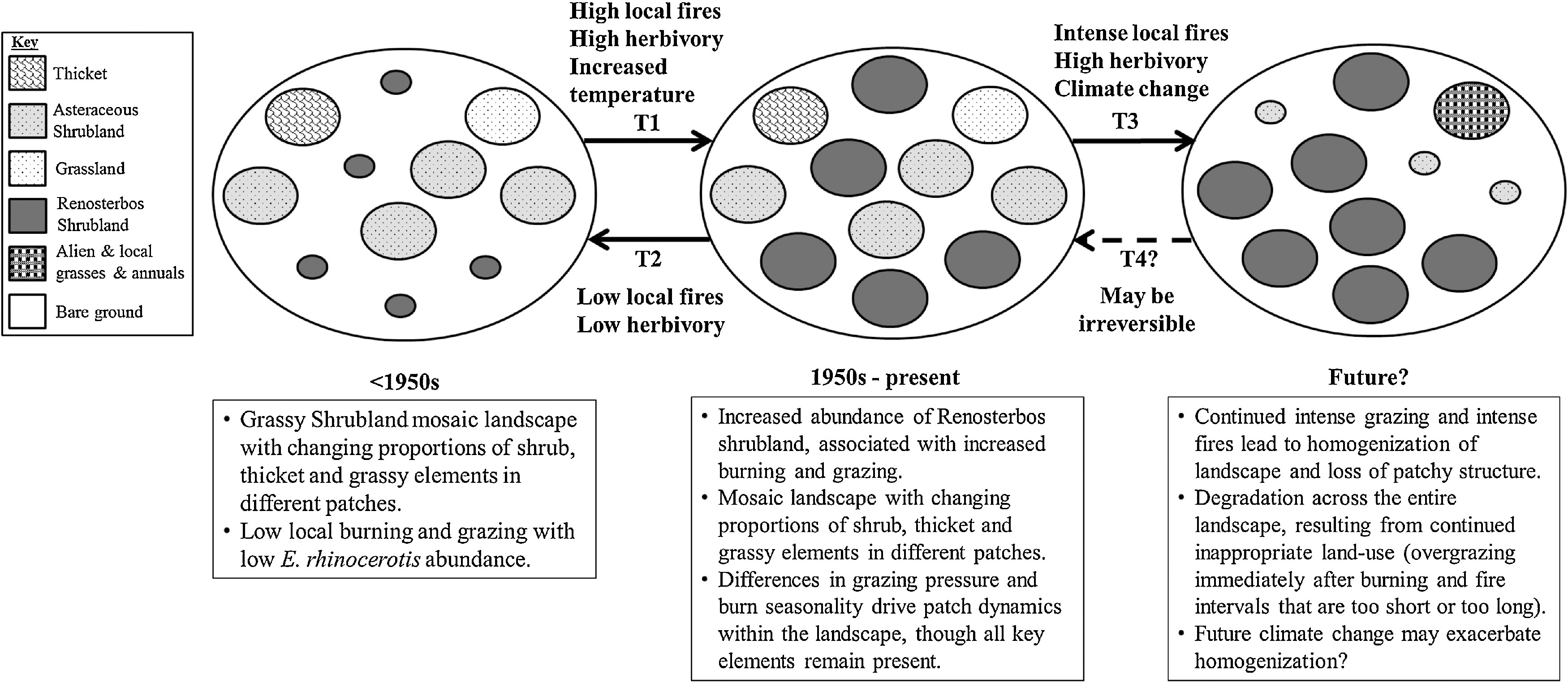NEW PAPER ALERT

The Plant Conservation Unit is pleased to announce the publication of an exciting new paper by Cherié J.Forbes, A/Prof. Lindsey Gillson and Prof. M. Timm Hoffman in the journal Anthropocene. The article is titled, "Shifting baselines in a changing world: Identifying management targets in endangered heathlands of the Cape Floristic Region, South Africa” and was published online in June 2018. The abstract is provided below but the full paper may be downloaded here.
"Ecological baselines are important in informing conservation management targets. Baselines can shift, however, depending on the timescale of observation. Using observations from the past few years or decades can give a misleading impression of the normal range of variability of an ecosystem, and the extent of recent human transformation. Palaeoecological techniques can track interacting effects of climate change and land-use on vegetation composition and fire regimes over decadal–millennial timescales, thereby informing ecologically possible management options [see Figure below].
In the Cape Floristic Region, South Africa, European settlement and subsequent land transformation led to dramatic changes in land-cover. Ninety-six percent of Renosterveld, a highly diverse indigenous shrubland, has been transformed. Thus, appropriate management of remaining Renosterveld fragments is critical to biodiversity conservation in this endangered habitat. However, we know little of the Renosterveld landscapes before colonial settlement from the mid-17th century.
This study used fossil pollen, coprophilous fungal spores and charcoal to track vegetation, herbivory and fire at centennial timescales in one of the few remaining Renosterveld fragments. Results showed that the current landscape at the study site is atypical compared with the long-term history of the site, with higher abundance of Renosterbos (Elytropappus rhinocerotis) and local fires and herbivory that reflect intensive utilisation beginning in the mid-20th century. Managing the integrity and composition of Renosterveld at this site according to a pre-colonial baseline will require lower levels of herbivory and less frequent fire.
This study illustrates how palaeoecological techniques can inform conservation management and restoration targets. To accommodate uncertainties in future environmental change, we recommend an adaptive management approach, which incorporates palaeoecological analyses, burning and grazing experiments and long-term monitoring."

Conceptual model showing a transition from ‘before 1950s’ to ‘1950s-present’ (T1) and then to a potential alternative stable state (T3), degraded Renosterveld, once an environmental threshold is crossed in the future. The time taken for a future regime shift is uncertain and the shift could be due to inappropriate levels of land-use disturbance (fire and overgrazing) and/or climate change. Degraded Renosterveld would consist of >60% bare ground, is homogenous at the landscape level and would be dominated by E. rhinocerotis and alien and local grasses and annuals. T1–T4 represent potential transitions and their associated drivers of change.
